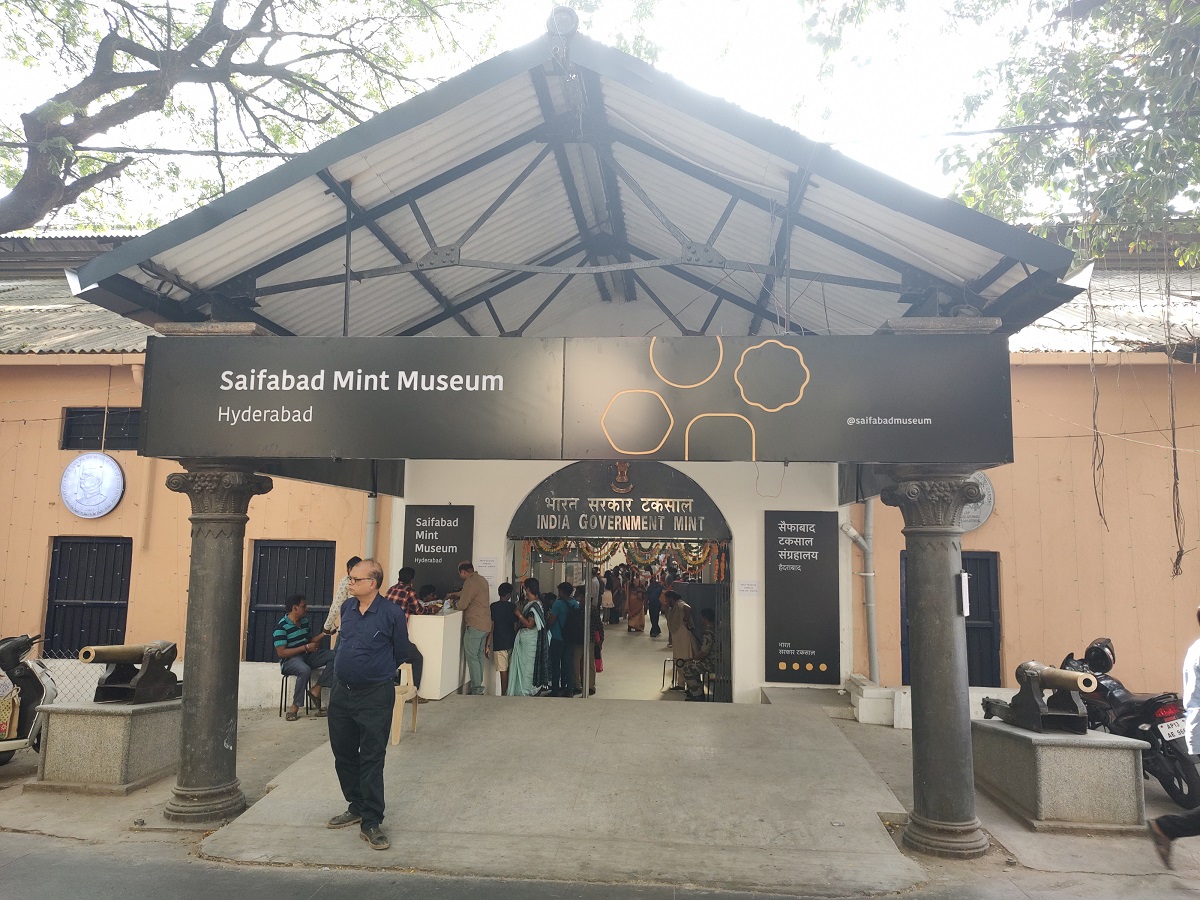The museum, at the 1903-built heritage structure, is currently showcasing the country's numismatic legacy.

Saifabad Mint Museum in picture, which was opened for public on 8 June. (Ajay Tomar/South First)
A replica of the world’s largest and heaviest gold coin is on display at this museum. As is the first-ever “rupee”, introduced by Sher Shah Suri in the 1540s. The original rock that was used for coin stamping in the 1800s is also there.
All of these and much more are featured at the Saifabad Mint Museum in the Mint Compound in Hyderabad, and although it is a temporary display now, there’s a good chance it may become a permanent fixture in the city soon, a senior official of India Government Mint, Hyderabad (IGMH) — custodian of the museum — told The South First.
The officials plan to monetise the entry into the museum once the decision on its permanent opening is taken.
“The final decision to permanently open the museum will be taken by the Union Ministry of Finance” but IGMH, a unit of Security Printing and Minting Corporation of India Limited (SPMCIL), plans to “open the premises for school children from 14 June to 18 June.”
Public response has been good so far, said the official at the 119-year-old building that has been turned into a museum.
“Approximately 2,000 visitors are coming every day. Till now, we have also sold some 4 lakh Uncirculated Coins (UNCs), which are specially designed for public collections,” he added.
For visitors, a trove of photographs and infographics describes the history, management, and evolution of the coinage in India and the Nizam-ruled-Hyderabad.
The information charts contain details of Asaf Jahi, British-India and independent-India coins, the evolution of coins and their shapes, the various metals used in minting, and even forgery and fakes.
Also on display are galleries of rare coins, collections of commemorative coins and currencies, medals, and postal stamps.
The steps used in the process of minting — ranging from cutting, coining, dying, stamping, blanking, edging and washing, rolling, melting, annealing, weighing, and packing — are explained with the relevant equipment placed next to them.
A large photograph shows a worker about to strike a hammer on an anvil for coin stamping using the die-striking method.
Artefacts of different periods are on display to help people better understand those eras.
Aditi Chakravarthy, a visitor at the museum, said, “The images and writings talk about the importance of coins, which one doesn’t get to know generally. It connects one from present to past. However, things can be a little more organised if there are museum guides present to help people understand the significance of coins in layman’s terms.”

May 05, 2024

May 04, 2024

May 04, 2024

May 04, 2024

May 04, 2024

May 04, 2024